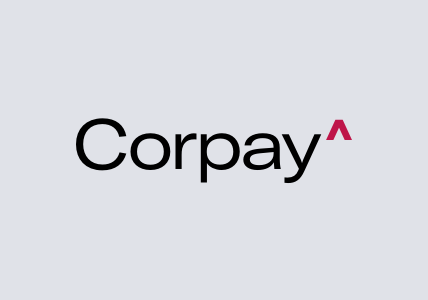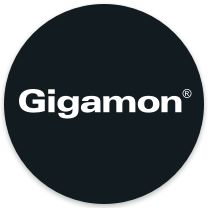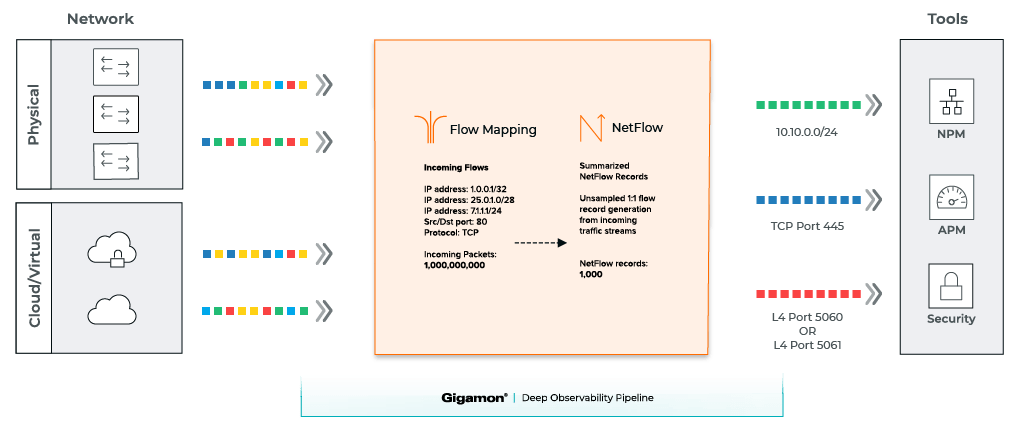IPFIX vs. NetFlow: Definition, Key Differences, and Use Cases
Updated June 4, 2025
What is IP Flow Information Export (IPFIX)? How does IPFIX relate to NetFlow? And most importantly, how can IPFIX benefit your organization? Here, we address IPFIX vs. NetFlow, and what you should know when choosing from available traffic-analysis options.
What is IPFIX? IPFIX is an acronym that stands for IP Flow Information Export. And while that explanation tends to generate even more questions, a simple description is that IPFIX is a protocol designed for collection and analysis of flow data from supported network devices.
If you’re a network administrator, IPFIX is an important protocol to be familiar with. But to learn how IPFIX works, it’s also important to first understand NetFlow.
Table of Contents
What Is NetFlow?
Developed by Cisco, NetFlow v9 is a program designed to collect information on network traffic. By monitoring the flow of information through routers and other devices, NetFlow is able to gather and analyze data packets, allowing you to develop a more detailed look at IP (Internet Protocol) traffic.
However, NetFlow is designed to only work with Cisco devices. This lack of flexibility can make it difficult for non-Cisco users who are interested in getting a clearer picture of their network traffic. This is where IPFIX comes in.
What Is IPFIX?
IPFIX, which stands for IP Flow Information Export, was created as a more universal solution to collecting and analyzing vital network data. And while IPFIX works with Cisco, it can also include a much wider range of vendor products and devices. This makes IPFIX a popular alternative to NetFlow for organizations that need an effective traffic-analysis solution for non-Cisco devices.
How IPFIX Works
IPFIX tracks IP actions across the network. To do so, IPFIX collects data packets from across the network, which is then organized by an Exporter, which sends the compiled information to a Collector. In IPFIX, Exporters can transport data to multiple Collectors, which is known as a many-to-many relationship. Exporters send information sets via IPFIX messages, using special templates made up of multiple elements.
One of the advantages IPFIX has over NetFlow is that in the collection process of the data packets, IPFIX users have the option to organize or analyze the data using IPFIX. In fact, IPFIX users are able to customize their requests, so the system only completes certain tasks, such as organizing information or doing basic data analysis when using IPFIX.
IPFIX is also able to integrate more information into its exporting process. This means customers don’t need to invest in an additional device to handle more complicated aspects of data collection and are able to run more efficient tests on their networks with IPFIX.
Why Is IPFIX Important?
Both IPFIX and NetFlow are used to collect IP flow statistics and generate relevant data records. At the most basic level, this is useful for ensuring any network slowdowns are identified and resolved quickly. That said, IPFIX has a wide range of applications: Information from the program can help network administrators monitor bandwidth, keep track of threats to network security, and figure out usage amounts for various users. Essentially, IPFIX can be useful for anything from advertising strategy to billing to general security.
IPFIX vs. NetFlow: Key Differences
Knowing whether to choose between NetFlow and IPFIX can be a tough decision to make. Here are some of the key differences to take into account when comparing NetFlow vs IPFIX:
Vendor Support and Compatibility
NetFlow was originally developed by Cisco and is primarily designed to work within Cisco environments. While it’s dependable and widely used, its utility outside Cisco networks is limited without additional tools or adaptations.
IPFIX, on the other hand, is a standardized protocol developed by the IETF based on NetFlow v9. IPFIX was designed, in part, to service more vendors than Cisco. Vendors who are currently utilizing IPFIX include Barracuda Networks, Nortel, Xirrus and Juniper Networks, among others. This makes IPFIX a better choice for organizations operating multi-vendor environments or those wanting more interoperability.
Customizability and Template Flexibility
Users are able to customize templates for IPFIX messages, which are pushed to receivers as part of data collection. These templates outline the data that users want to collect. NetFlow is also able to collect information beyond its standard, but it can take a lot of time and fiddling to get this right. Templates are more rigid, and users have to work within the confines of Cisco’s platform.
IPFIX allows users to define their own templates from the ground up, specifying exactly what data elements they want to collect. This flexibility makes IPFIX ideal for advanced users who need to tailor their data collection to specific monitoring or security goals.
While all this customization can be fantastic in the right hands, it can become very confusing for less demanding users. For new users who have standardized on Cisco devices, NetFlow’s more straightforward design wins out.
Field Length and Data Depth
NetFlow uses fixed-length fields, which limits the type and depth of information it can collect. This structure can be a constraint when trying to monitor complex or variable data like full URLs or custom identifiers.
With IPFIX, users are able to use variable-length fields, which allows IPFIX to collect data like URLs and messages. This allows for deeper analysis and broader visibility across the network.
Scalability and Complexity
NetFlow is simpler to implement and may be more suitable for users who are newer to flow monitoring or those working within an all-Cisco environment. Its relative simplicity and standardized configuration reduce the learning curve.
IPFIX is more complex to configure due to its flexibility and customization options. For organizations with skilled IT teams, this complexity translates into powerful network monitoring capabilities. For those without, it may introduce unnecessary complications.
Standards and Evolution
NetFlow v9 is a proprietary protocol and, while widely adopted, is not an IETF standard. Cisco has extended it through Flexible NetFlow to try to meet broader needs. Flexible NetFlow could help expand their current network monitoring system well beyond the NetFlow standard.
IPFIX is a formal IETF standard, making it a more future-proof and vendor-neutral option. It was developed directly from NetFlow v9 to address the limitations and promote greater interoperability.
Use Case Fit
NetFlow is well-suited for simpler environments, especially where Cisco devices dominate the network. Its ease of use and proven reliability make it ideal for basic traffic monitoring and analysis.
IPFIX is better for complex network environments, where organizations require more granular data collection, diverse vendor support, and tailored insights for security, compliance, or operational analysis.
Essentially, in the debate between IPFIX and NetFlow, it makes more sense for users who want greater freedom to collect information and work with a number of vendors beyond Cisco to use IPFIX. After all, IPFIX was designed with NetFlow’s flaws in mind. Still, NetFlow is dependable, albeit basic, and can cover many standard requests.
Flow Generation from AWS Environments
Traditional NetFlow and IPFIX were designed for on-premises networks, but as organizations migrate to the cloud, visibility into virtualized infrastructure is essential. AWS doesn’t natively generate NetFlow or IPFIX records in the same way physical devices do. However, third-party solutions like Gigamon’s GigaVUE Cloud Suite for AWS can generate flow records from AWS traffic, enabling consistent traffic analysis across hybrid and multi-cloud environments. This allows you to extend NetFlow/IPFIX-based monitoring into the cloud for full network observability.
When to Use IPFIX vs. NetFlow
Choosing between IPFIX and NetFlow depends on your network architecture, visibility needs, and vendor landscape. Here are some key factors to consider:
- Use NetFlow if your environment is primarily Cisco. NetFlow is built into Cisco devices and provides solid, straightforward flow monitoring for bandwidth usage, performance metrics, and basic traffic visibility.
- Use IPFIX in multi-vendor or heterogeneous networks. As a standards-based protocol, IPFIX offers broad compatibility across vendors like Juniper, Palo Alto, and Fortinet, making it ideal for diverse infrastructures.
- Choose IPFIX when you need more detailed or customized data. IPFIX supports variable-length fields and customizable templates, which allow for exporting richer data such as application names, URLs, or user identifiers, which is helpful for deeper analysis and security monitoring.
- Use NetFlow (or Flexible NetFlow) for simpler deployments. If you don’t need the extended features of IPFIX, traditional NetFlow is easier to configure and manage, particularly in Cisco-heavy environments.
- Consider IPFIX for compliance and advanced threat detection. Organizations with strict security or compliance needs benefit from the added context IPFIX provides. Its flexibility enables more detailed insights for identifying anomalies or policy violations.
Gigamon Solutions
One helpful solution to the complexities of network monitoring is Gigamon, which offers network visibility and analytics across multi-vendor infrastructure. When it comes to working with IPFIX or NetFlow, Gigamon is here to help offload NetFlow generation from the network devices.
For example, the GigaSMART® applications offer improved network visibility, as well as optimize traffic handling and tool-set efficiency. One GigaSMART application in particular, NetFlow Generation, offloads NetFlow generation from the routers, switches and other network devices onto the Gigamon Deep Observability Pipeline, therefore enabling the network devices to focus on their core functions (see diagram below). While helpful, NetFlow and IPFIX are still at risk of slowing down network devices and misplacing information; slower network devices could mean loss of sales and dropped data packets could very well mean overlooking malicious attacks on the network. With the addition of NetFlow Generation from Gigamon, users will access complete NetFlow information and have efficient network devices and higher security.
| FEATURES | BENEFITS |
|---|---|
| Pervasive visibility with NetFlow generation across the entire network | Security and performance monitoring tools get a complete view of the network, versus isolated views of individual network segments generated by a specific router or switch |
| High-throughput out-of-band NetFlow solution | No performance impact of NetFlow generation from production routers and switches |
| High-throughput out-of-band NetFlow solution | Complete and precise picture of network activity for security monitoring without loss of fidelity incurred from sampled NetFlow generation |
| Support for a wide range of NetFlow export formats – v5, v9, IPFIX and CEF | Compatibility with legacy and next-generation NetFlow collectors |
| Ingress filtering on Layer 2, Layer 3 and Layer 4 headers using Gigamon Flow Mapping® | Generate flow statistics for specific networks |
| Support for up to six collectors with customizable templates and filters | Leveraging multiple vendors for security and network monitoring |
FAQs
Is IPFIX better than NetFlow?
It depends on your network needs. IPFIX is more flexible and vendor-neutral, allowing for custom fields and broader device compatibility. However, NetFlow (especially in Cisco environments) is simpler to deploy and manage. If you need advanced data customization or support for a multi-vendor environment, IPFIX is generally the better option.
Can I use IPFIX and NetFlow together?
Yes. Many organizations use both protocols depending on device capabilities and use cases. You can collect NetFlow from Cisco devices and IPFIX from other vendor systems, then unify the data using a compatible collector or visibility platform.
Does Gigamon support IPFIX and NetFlow?
Yes, Gigamon supports exporting flow records in both NetFlow and IPFIX formats, depending on your configuration and the monitoring tools in your ecosystem.
Conclusion
When it comes to choosing between IPFIX vs NetFlow, the decision ultimately depends on your network environment, data customization needs, and vendor landscape. NetFlow is a solid, straightforward choice for Cisco-based infrastructures, while IPFIX offers greater flexibility and extensibility for diverse, multi-vendor networks. Both play a critical role in traffic analysis, threat detection, and performance monitoring.
To get the most from either protocol, consider integrating a robust visibility solution like Gigamon. With GigaVUE® visibility appliances, your organization can achieve deep observability across your network, offload flow generation from critical devices, and ensure more accurate, comprehensive monitoring. Ready to see the difference? Request a free demo and explore how Gigamon can elevate your network visibility and security.
Further Reading
- “What Is NetFlow?”
- “Network Monitoring vs. Network Visibility”
- “Gigamon and Plixer – Extending Visibility into the Public
Cloud with NetFlow and IPFIX”

CONTINUE THE DISCUSSION
People are talking about this in the Gigamon Community’s Networking group.
Share your thoughts today








 Sam Kumarsamy
Sam Kumarsamy
